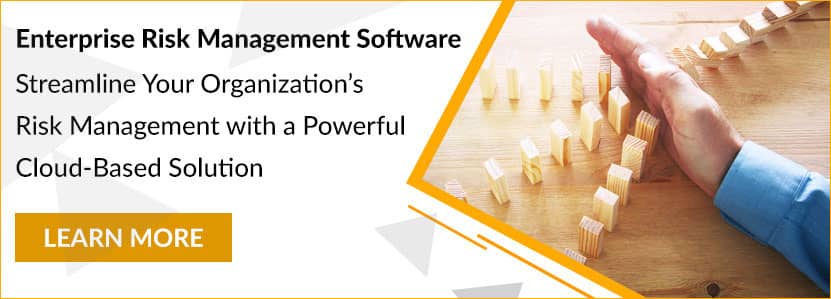Home/ Blog / Seamless Risk and Compliance Integration for Better Performance
It is no secret that risk management and compliance departments have many standard processes, requirements, and goals. In addition, both risk and compliance are inherently intertwined – many compliance requirements exist to mitigate risks, and compliance violations directly affect risk levels throughout the organization. Given the degree to which the two domains interact, it seems self-evident that increasing their integration will result in performance benefits. However, both departments are also critical and cannot be subjected to disruptions.

Financial organizations need to ensure that their risk management experts can mitigate the risks that can negatively affect the organization. Similarly, financial organizations also need to ensure that compliance levels are maintained throughout the organization. Risk management and compliance management are both complex topics that necessitate the undivided attention of professionals. This means that businesses need a way to integrate risk and compliance management processes without disrupting their workflow or adding delays to their work.
Making Integrations Seamless
Banks and financial institutions can integrate risk and compliance efforts while empowering team members to focus on essential tasks. This can be accomplished by consolidating risk and compliance on a single platform and utilizing the platform to provide seamless integration between risk and compliance processes. Without such a platform, integration is difficult to achieve since it places the burden of integration on the risk and compliance teams. Both teams must alter their methods of operation and communication to be on the same page – their documentation practices need to be standardized, they need to share risk and compliance data, and they need complementary workflows that benefit both departments.
The way modern risk and compliance platforms handle the risk and compliance synergy makes the integration seamless. The risk team uses the risk management module that is included in the risk and compliance management platform. The compliance team uses the compliance management module present within the same platform. Both have tools dedicated to their own areas with department-specific workflows. The risk and compliance teams do not need to reach out to each other to work together. Instead, the integration is handled by the risk and compliance platform.
The way modern risk and compliance platforms handle the risk and compliance synergy make the integration seamless. The risk team uses the risk management module that is included in the risk and compliance management platform. Share on XDifferent Domains, Same Platform
Since both the risk team and compliance team use the same platform, the platform can easily combine data from risk and compliance to generate enhanced insights. The board of the bank also gets visibility into both risk and compliance on the same platform. More importantly, the risk and the compliance teams begin collaborating automatically since so many of their processes depend on each other.
When there are compliance issues, the platform will highlight the increased risks due to compliance issues to the risk team. The compliance team can see all the risks team has discovered related to the regulation the compliance team is working with, allowing them to ensure their actions do not affect risk levels. Instead of requiring them to reach out, the platform automatically streams the required data and information. As a result, both teams work on their own goals more efficiently than before.
Enhanced Visibility for Harmonious Collaboration
Using the same technology platform for risk and compliance brings about a paradigm shift in how risk and compliance teams work together. Risk and compliance management platforms make the risk and compliance management frameworks visible and tangible. Instead of having to understand how risk is affecting compliance, the risk team can look at the compliance issues linked with the risk on the platform. Similarly, the compliance team can see the risks attached to each compliance requirement. This means that when the teams communicate with each other, they already know each other’s needs.
The automated notifications and metrics generated by risk and compliance management platforms further increase this harmony. All the information and updates are automatically pushed towards the relevant stakeholders. Everyone needs to focus on their own work – the platform will make sure that everyone else affected by the work will see any changes that occur. Ownership over risk and compliance issues increases as employees can see which issues are assigned to them. When the Chief Risk Officer and Chief Compliance Officer talk during board meetings, both know how their teams have interacted with each other.
Unified architectures for risk and compliance are becoming common because of these benefits. Banks and financial organizations want to decrease administrative costs in risk and compliance and want more risk and compliance insights. Modern risk and compliance technology platforms deliver more benefits at lower costs by enabling enhanced integrations while removing redundant business processes. Interested in seeing how your organization can benefit from a risk and compliance platform? Get in touch with our team for a demo of Predict360, the American Bankers Association (ABA) endorsed risk and compliance management platform.
Request a Demo
Complete the form below and our business team will be in touch to schedule a product demo.
By clicking ‘SUBMIT’ you agree to our Privacy Policy.




